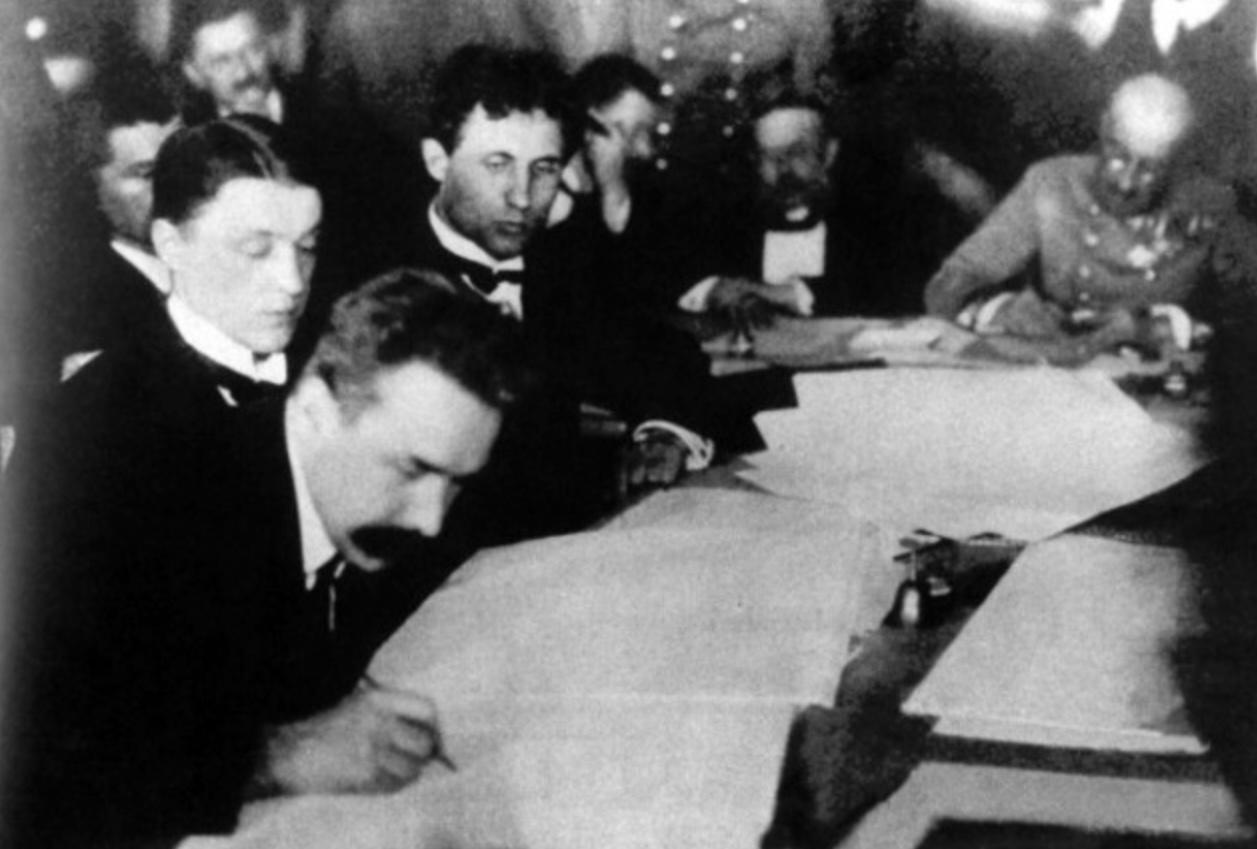
On this day in military history…
The Armistice of Mudros, signed on 30 October 1918, marked the end of hostilities between the Ottoman Empire and the Allied Powers in World War I. This agreement effectively ended the Ottoman Empire’s participation in the war and laid the groundwork for the subsequent partitioning of its territories. The signing of the armistice was the culmination of a series of military defeats, internal political upheaval, and the general collapse of the Central Powers by late 1918.
By the autumn of 1918, the Ottoman Empire had suffered heavy losses on multiple fronts. The defeat in the Sinai and Palestine Campaign, where British-led forces under General Edmund Allenby captured Damascus and advanced into Ottoman Syria, was particularly significant. Additionally, the Empire was struggling with uprisings and resistance in the Arab provinces, exacerbated by the Arab Revolt and British support for local insurgents. Simultaneously, the collapse of Bulgaria on 29 September 1918 following its own armistice with the Allies meant that the Ottoman Empire was now isolated from its key ally, Germany, and exposed to attacks through the Balkans. Realizing the worsening situation and the impossibility of continuing the war, the Ottoman government sought to negotiate peace.
The political situation in Istanbul had also changed dramatically. In early October 1918, the government led by the Committee of Union and Progress resigned, and a new administration under Ahmed Izzet Pasha took power. The new government moved quickly to open peace talks with the Allies. Vice Admiral Sir Somerset Gough-Calthorpe, the British commander of the Aegean Squadron, was designated to represent the Allies in the negotiations. Although nominally acting on behalf of all the Allied Powers, the British assumed control of the process, with little direct involvement from the French, Italians, or Greeks.
The negotiations took place aboard the British warship HMS Agamemnon, anchored in the port of Mudros on the Greek island of Lemnos. On behalf of the Ottoman Empire, the armistice was signed by Rauf Bey (later Rauf Orbay), the Minister of the Navy and a senior naval officer. Representing the Allies was Admiral Calthorpe. The signing occurred under considerable pressure, with the Ottoman delegation lacking room for negotiation due to their precarious military position. The Allies presented their terms with minimal flexibility.
The armistice contained several sweeping provisions. It allowed the Allies to occupy forts controlling the Dardanelles and Bosporus straits and granted them the right to occupy "any strategic point" in case of a threat to Allied security. All Ottoman garrisons in Arab provinces were to surrender, and the Ottoman navy was to be demobilized. Allied prisoners of war were to be released immediately, while Ottoman POWs would remain in Allied custody. The terms effectively opened up the Ottoman Empire to Allied military occupation and administrative control, despite not being a formal surrender.
The Armistice of Mudros signaled not only the end of Ottoman involvement in World War I but also the beginning of a new phase of foreign occupation and nationalist resistance. Within months, Allied forces entered Constantinople, and plans for the partition of the empire under the Treaty of Sèvres began to take shape. However, the Turkish War of Independence, led by Mustafa Kemal Atatürk, would soon alter the trajectory of these postwar arrangements, ultimately leading to the abolition of the Ottoman sultanate and the foundation of the Republic of Turkey.










